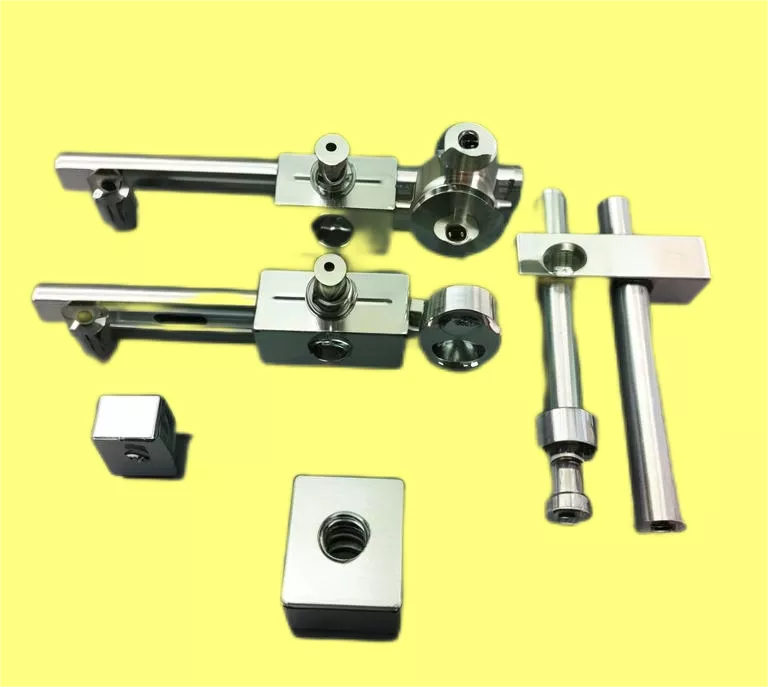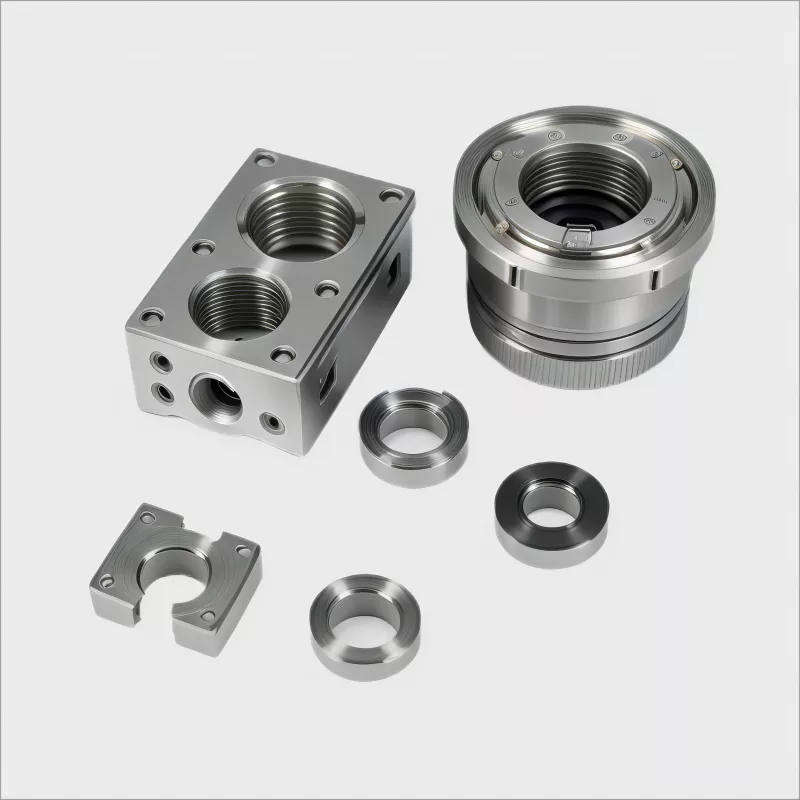305 Stainless Steel: Properties, Applications, and Manufacturing Insights
 May 23,2024
May 23,2024

305 is an austenitic stainless steel. It is known for its deep drawn applications. When ordering 305 stainless steel for any particular applications, deep drawing must be kept in mind. Deep drawn feature is not guaranteed in annealed or soft 305 stainless steel. This alloy also has good weldability and formability. This makes it suitable for large-scale projects where specific shapes or sizes are required. Further information about the origin of deep drawing in 305 steel and its features and applications are discussed below:
Overview of 305 Stainless Steel
305 grade contains chromium and nickel in a significant amount. This grade has a low work hardening rate due to high nickel content. This low work hardening makes this alloy suitable for the multiple stage deep drawn applications. Earring cause in drawing can be reduced by introducing directionality in cold working to a small amount. This does not require process annealing as 304 grade requires which causes cracking in it. Corrosion resistance of 305 grade is similar to 304/304L type.

Historical Development and Use
305 was originally designed for the highest formability. Among all the austenitic stainless steel, this alloy has lowest work hardening and strain hardening rate. Strength and corrosion resistance of 305 is good. It is normally available in strip and bars from mills.
Is 305 stainless steel magnetic?
No, 305 is nonmagnetic in annealed and cold worked state. It can slightly magnetic when cold working increased.
305 Stainless Steel Equivalent
|
Specification |
Designation |
|
EU |
X4CrNi18-12 |
|
EN |
1.4303 |
|
USA |
305 |
|
Japan JIS |
SUS305J1 |
|
France AFNOR |
Z1CN18-12 Z5CN18-11FF |
|
England BS |
305S19 |
|
Russia GOST |
06KH18N11 |
Advantages and Disadvantages of 305 Stainless Steel
Advantages
- Corrosion resistance: 305 is not likely to corrode due to high amount of chromium and nickel content.
- Better mechanical properties: tensile strength of 305 grade is high which makes it a strong material.
- Durability: 305 has long service life just like the other stainless steel alloys.
- Cost effective: 305 has reasonable as compared to other alloys and is readily available.
- Simple maintenance: 305 can be cleaned and maintained easily without any expensive treatment and procedure.
- Environmentally friendly: unlike plastics or composites, it is easy to recycle and safe to use for a long period of time.
Disadvantages
There are few disadvantages of 305 grade.
- Prone to chloride corrosion: it is not suitable for marine applications.
- Non-magnetic: cold working can make it slightly magnetic but not suitable for magnetic application
- Stress corrosion cracking: in the presence of chloride along with high stress, stress corrosion cracking can occur.
Chemical Composition
Chemical composition of 305 stainless steel is:
|
Elements |
Percentage |
|
Iron |
67% |
|
Chromium |
18% |
|
Nickle |
12% |
|
Manganese |
1.9% |
|
Silicon |
09% |
|
Carbon |
0.12% |
|
Phosphorus |
0.045% |
|
Sulfur |
0.03% |
Mechanical Properties
Mechanical properties of 305 grade is as:
|
Mechanical properties |
Values |
|
Tensile strength |
585MPa |
|
Yield strength |
260MPa |
|
Elastic modulus |
193GPa |
|
Shear modulus |
86GPa |
|
Elongation |
50% |
|
Hardness |
80HB, 82HV, 42HR |
Physical Properties
|
physical properties |
Values |
|
Density |
8g/cm3 |
|
Melting point |
1454℃ |
|
Thermal conductivity |
16.3W/m.K |
|
Thermal expansion coefficient |
17.3μm.m.K |
|
Specific heat |
0.50kJ/kg.K |
|
Electrical resistivity |
28.4mΩ.in |
Applications of 305 Stainless Steel
Industrial Uses
Grade 305 is widely used in electrical industries making electric parts, eyelets and spun parts. It is also a common material for food processing, chemical and textile industries.
Consumer Products
For household, it is mostly used for making kitchen items like utensils, and kitchen appliances. 305 has smooth surface and looks aesthetically appealing when used for making appliances. Furthermore, it has easy maintenance and easy to clean.
Specialized Applications
305 is also used in the medical field. It has high corrosion resistance and formability. This makes it perfect for making surgical tools like catheters and other devices.
In aerospace and automotive industries, it is used in making parts like wires, ropes, cables and support for structures.
Manufacturing and Processing of 305 Stainless Steel
Forming and Machining
To get the best results in machining and forming of 305 Stainless Steel, slow speed with heavy feed fate is recommended. This eases in tendency of alloy to glaze through the machining procedure.
Mahcnign and forming is done perfectly when conventional methods are used rather than machining methods for austenitic grade alloys. Because it contains high carbon content which needs high speed rates.

Welding and Joining
305 is naturally hard and its joining and welding can be challenging. It is not recommended to use oxyacetylene welding methods. Cracks occurrence is common in 305 grade by welding due to high corrosion resistance. Therefore, special nonmagnetic clamps are used to avoid oxidation and to place the material at the right place during welding.
Surface Treatments and Finishing
- Work hardening: normally, heat treatment does not have much effect on 305 hardness. But cold working can increase its strength and hardness. This steel has a low work hardening rate which makes it easily deep drawn and spun and blanked.
- Annealing: this alloy is annealed perfectly at temperature 1850-2050ᵒ After that quick cooling is required immediately.
Challenges and Considerations in Using 305 Stainless Steel
Corrosion Resistance Limitations
Corrosion resistance in chloride presence is not good in SS305. This alloy is not suitable for marine applications. It is also prone to stress corrosion cracking in chloride and high stress applications.
Cost and Availability
The cost of SS305 is cheap. Still sometimes, it becomes challenging with 305 in some cases like high labor cost and shipping cost. Fluctuation in currency and overall project cost also have significant effect on material’s price.
UNS 30500 VS other stainless steel
Are you struggling to choose between UNS 30500, 304, or 316 stainless steel for your next project?
UNS 30500 refers to a type of stainless steel that is comparable to AISI 305 or DIN 1.4329. It's essential to understand that UNS (Unified Numbering System) designations are used in the United States, while AISI (American Iron and Steel Institute) and DIN (Deutsches Institut für Normung) are other international standards for metals and alloys.
305 vs 316 stainless steel
316 grade is preferred when high corrosion resistance is required.316 is good choice for marine applications without increasing the overall cost of project. 304 has a low work hard rate and can be deep drawn in multi-stages.
304 vs 305 stainless steel
305 stainless steels has higher nickel content than 304. This makes more bendable, and weldable than 305. Although both have the same corrosion resistance features.
Conclusion
At Tuofa China, we specialize in CNC machining services, including precision machining of 305 Stainless Steel. 305 Stainless Steel is an exceptionally versatile material with a combination of properties that make it well-suited for a wide range of applications. Its corrosion resistance, strength, and hardness are crucial factors contributing to its extensive use across various sectors such as medical, automotive, and food processing industries. Employing proper manufacturing techniques and surface finishing processes is imperative to ensure the performance and longevity of components made from this high-quality material.
 Tel/WeChat:
Tel/WeChat:  Email:
Email: 
 Home
Home
 Stainless Steel 304L/1.4307: Everything You Want to Know
Stainless Steel 304L/1.4307: Everything You Want to Know 







